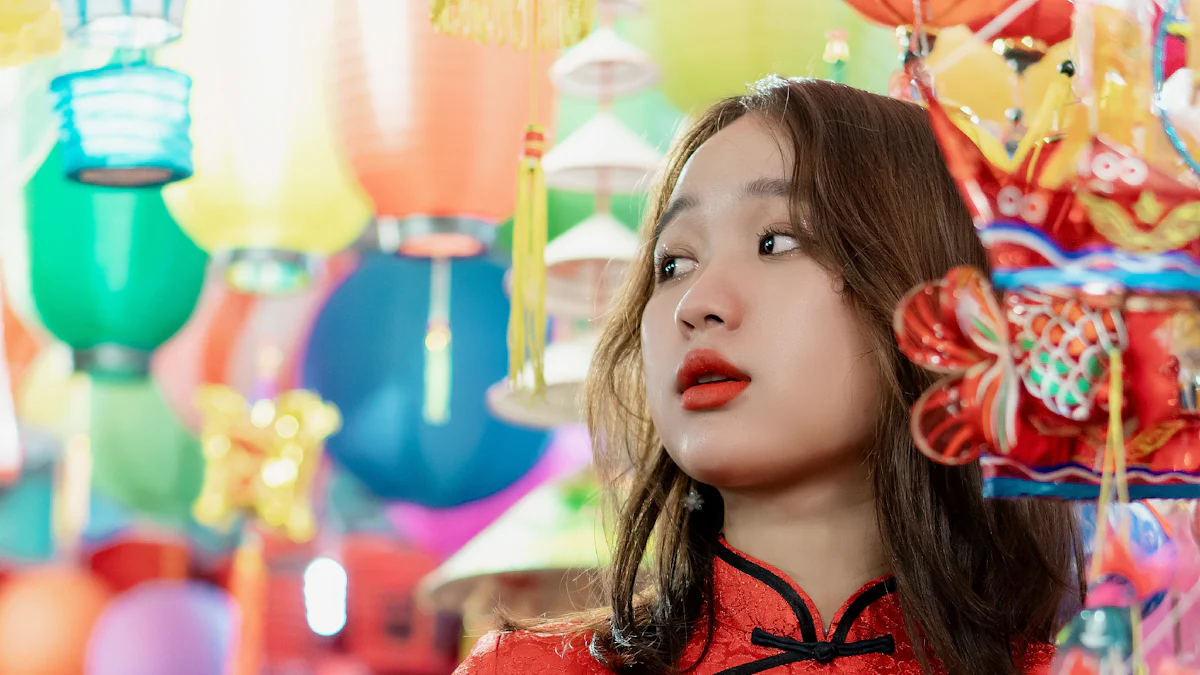 The cheongsam history unfolds a captivating narrative of tradition and elegance deeply rooted in Chinese culture. This iconic attire, known for its intricate craftsmanship and timeless allure, holds a significant place in the hearts of many. The purpose of this blog is to delve into the rich heritage and evolution of the cheongsam, shedding light on its cultural importance and enduring legacy.
The cheongsam history unfolds a captivating narrative of tradition and elegance deeply rooted in Chinese culture. This iconic attire, known for its intricate craftsmanship and timeless allure, holds a significant place in the hearts of many. The purpose of this blog is to delve into the rich heritage and evolution of the cheongsam, shedding light on its cultural importance and enduring legacy.
The Origins of Cheongsam
Early Beginnings
During the Qing Dynasty, the influence of cheongsam history began to take shape. Examples of cheongsam from the Qing Dynasty showcase the evolution of this iconic attire. In the 1920s, young female students in Shanghai were seen wearing a pale blue cloth, exuding elegance in their narrow waist blouses and silk skirt shoes. This style quickly gained popularity among women for its ability to reflect the beauty of Oriental women. The main fabric used for these cheongsams was indanthrene cloth, known for its color stability and favored by fashionable women in Shanghai.
Cultural Significance
The cheongsam history continued to unfold as it became a symbol of elegance and grace. The declaration of the cheongsam as the national dress for Chinese women in the 1920s solidified its cultural importance. This attire represented more than just fashion; it embodied tradition and sophistication. The beauty of Oriental women was encapsulated in every stitch of the cheongsam, making it a cherished garment among young and middle-aged women alike.
Symbol of Elegance
The cheongsam’s form-fitting design accentuated the beauty and poise of Chinese women. Its sleek silhouette became synonymous with grace and femininity, transcending mere clothing to become a statement of cultural pride.
National Dress Declaration
When the Nationalist government declared the cheongsam as China’s national dress, it elevated this attire to a symbol of national identity. The cheongsam not only adorned bodies but also represented a rich heritage that resonated with generations past and present.
Evolution Through the Ages
1920s Transformation
The evolution of cheongsam in the 1920s marked a significant turning point in its design and craftsmanship. During this period, cheongsam underwent a remarkable transformation, incorporating intricate hand embroidery and strict production techniques. The meticulous attention to detail in crafting these garments elevated the cheongsam history, making it a symbol of artistry and cultural significance.
Shift to Modernity
The shift towards modernity in cheongsam design during the 1920s reflected the changing societal landscape. Women embraced the fusion of traditional elements with contemporary aesthetics, creating a unique style that resonated with the spirit of the times. The incorporation of vibrant colors and innovative patterns showcased a bold departure from convention, capturing the essence of a new era.
Women’s Liberation Movement
The 1920s also witnessed the influence of the women’s liberation movement on cheongsam fashion. As women sought greater independence and self-expression, the cheongsam became a symbol of empowerment and freedom. The form-fitting silhouette celebrated women’s bodies, challenging traditional norms and redefining beauty standards. Through their choice of attire, women asserted their identity and agency in a rapidly changing world.
Mid-20th Century Changes
In the mid-20th century, cheongsam underwent further adaptations to reflect evolving global trends and influences. The fusion of Eastern and Western styles reshaped the design landscape, giving rise to innovative interpretations that captivated fashion enthusiasts worldwide.
Influence of Western Fashion
The influx of Western fashion trends had a profound impact on cheongsam design during this period. Elements such as tailored cuts, bold prints, and experimental fabrics were integrated into traditional silhouettes, creating a harmonious blend of cultural heritage and contemporary flair. This cross-cultural exchange enriched cheongsam history, paving the way for new possibilities in fashion expression.
Adaptations in Design
As designers explored new creative horizons, cheongsam underwent diverse adaptations in its design approach. From asymmetrical hemlines to avant-garde embellishments, each reinterpretation breathed fresh life into this timeless garment. These innovative designs not only honored tradition but also celebrated innovation, ensuring that cheongsam remained at the forefront of sartorial evolution.
Modern-Day Relevance
Contemporary Fashion
In modern China, cheongsam continues to captivate fashion enthusiasts with its timeless elegance and cultural significance. Designers like Water as Yan are at the forefront of creating women’s cheongsam that exude Chinese charm and sophistication. By infusing traditional craftsmanship with contemporary trends, these designers ensure that the cheongsam history evolves with the times and reflects current interests.
- The evolution of cheongsam design mirrors the dynamic nature of Chinese fashion, where cultural factors play a pivotal role in shaping each creation. From intricate embroidery to vibrant colors, every detail in a cheongsam dress tells a story of heritage and artistry.
Global Influence
The influence of cheongsam extends far beyond China’s borders, resonating with fashion lovers worldwide. Institutions like the Jiaxing Cheongsam Qipao Culture Museum showcase the traditional craftsmanship and unique features of this iconic attire. Through detailed insights into the process of creating cheongsam, visitors gain a deeper appreciation for the needlework culture and crafts that define this garment.
- As global interest in traditional attire grows, the symbolism behind cheongsam becomes increasingly significant. It serves not only as a fashion statement but also as a symbol of Chinese identity and cultural pride embraced by individuals around the globe.
The cheongsam history narrates a tale of tradition and elegance that has transcended generations. Its enduring legacy lies in its cultural significance, symbolizing grace and sophistication. As the cheongsam continues to captivate fashion enthusiasts globally, it serves as a testament to Chinese heritage and artistry. The future of cheongsam in fashion and culture is poised to evolve, blending traditional craftsmanship with contemporary trends to showcase the beauty of Oriental women in a modern light.






